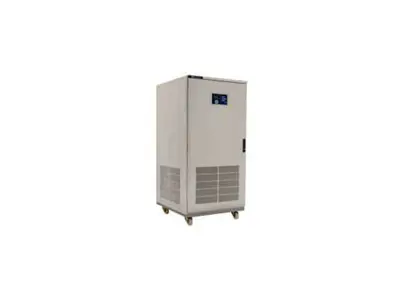What is a Regulator?
Regulators are devices or mechanisms used in electrical circuits to maintain voltage or current within a certain range or to adjust it to a specific value. Regulators are commonly used to provide protection against fluctuations or sudden changes and to ensure the stable operation of electrical devices.
- Voltage Regulators: Voltage regulators are used to regulate input voltage fluctuations and maintain output voltage within the desired range. These types of regulators are especially important to protect devices connected to fluctuating or noisy voltage sources.
- Current Regulators: Current regulators are used to limit or adjust the current in a circuit to a specific value. They are used especially to ensure the safe operation of high-power devices or industrial applications.
- Automatic Voltage Regulators: Automatic voltage regulators (AVRs) are devices used, often in conjunction with generators, to regulate voltage fluctuations in the electrical grid. These types of regulators automatically maintain the output voltage within the desired range when the grid voltage drops or rises.
Electrical regulators are also used in many industrial and commercial applications. In situations where sensitive electronic devices such as computer systems, medical equipment, industrial machines, and laboratory equipment require a stable power source, electrical regulators are used. Regulators mostly operate with analog or digital control systems. They monitor input voltage or current, process this data, and adjust the output as needed to maintain the desired electrical parameters.
Types of Regulators
Electrical regulators come in different types based on various characteristics, applications, and requirements. For example, let's consider a regulator where the output voltage can be adjusted between 0 volts and 12 volts. 0-12v adjustable regulator typically allows the desired output voltage to be set using mechanisms like potentiometers or control knobs. These types of regulators enable adjusting a specific output voltage within the desired range.
- Single-Stage Voltage Regulators: Simple design regulators used primarily for low-power devices.
- Multi-Stage Voltage Regulators: These regulators have a more complex design and are suitable for high-power devices or industrial systems.
- Automatic Voltage Regulators (AVR):
- Generator AVR: Used to protect and maintain the output voltage of electricity-generating generators.
- AC Grid AVR: Regulates voltage fluctuations from the electrical grid and provides the desired output voltage.
- Static voltage regulator is a type of regulator that regulates voltage fluctuations from the power grid and provides the desired output voltage in a stable manner. They are also called "static AVR (Automatic Voltage Regulator)." These regulators are commonly used in industrial facilities, commercial buildings, hospitals, and other areas with sensitive electrical requirements.
- Electronic Current Regulators: Used to regulate fluctuating or high-frequency currents.
- Industrial Current Regulators: Current regulators used in industrial machines and high-power devices.
- Static voltage regulator is a type of regulator that regulates voltage fluctuations from the power grid and provides the desired output voltage in a stable manner. They are also called "static AVR (Automatic Voltage Regulator)." These regulators are commonly used in industrial facilities, commercial buildings, hospitals, and other areas with sensitive electrical requirements.
- Regulators used to regulate both voltage and current. They are preferred to meet complex power requirements.
- Digital Regulators: Regulators that operate using digital microcontrollers or processors. They provide more precise control and adjustment capabilities.
- UPS (Uninterruptible Power Supply) Regulators: Uninterruptible power sources used to protect devices and provide power during sudden outages or fluctuations in the power grid.
- Heating Control Regulators: Special regulators used for temperature regulation. They help control temperature fluctuations to ensure specific temperature ranges.
- Servo Regulator: A type of regulator commonly used in motors and mechanical systems. Also known as a "servo drive" or "servo controller." These regulators are used to ensure accurate control of a servo motor or actuator. Servo systems are widely used in applications that require precise position, speed, or torque control.
Regulators that adjust or regulate the frequency in AC power systems. They are commonly used in generator systems. These types represent only a few of the many variations of electrical regulators. Electrical regulators can come in various sizes and features and can vary depending on the applications they are used for.
Applications of Regulators
Regulators are used in a wide range of industries and application areas to regulate, control, protect, or achieve desired results for a specific process or system. For example, if we need to balance a 10 kVA power and we get a 10 kVA fully automatic regulator. Our regulator balances the voltage with the ampere value, and this way you can continue your work with a 10 kVA regulator.
- Electrical and Electronics: Electrical regulators ensure the desired performance of electrical circuits by regulating voltage and current. They are also used in UPS (Uninterruptible Power Supply) systems or generators.
- Industrial Automation: In industrial processes, factories, and production lines, regulators control variables such as temperature, pressure, and current to increase product quality and efficiency.
- Energy Management: In energy management applications, regulators regulate voltage, current, and power to optimize energy consumption and save energy.
- Automotive: Various regulators are used in the automotive sector such as cruise control, motor control systems, and charging regulators.
- Aviation and Space: Regulators in aviation and space applications regulate parameters such as fuel flow, temperature, and pressure in aircraft, spacecraft, and drones.
- Medical and Health: Regulators used in medical devices are applied in applications such as patient monitoring equipment, radiology devices, and surgical tools.
- Environmental and Water Management: Regulators control environmental factors in wastewater treatment plants, irrigation systems, and air quality monitoring devices.
- Food and Processing Industry: Temperature, pressure, and flow regulators are used in food production to ensure product quality and hygienic conditions.
- Telecommunications: Voltage regulators and power management regulators in telecommunication systems ensure the stable operation of the network.
- Automation and Robotics: Regulators used in industrial robots and automation systems regulate motion and processes.
- Alternative Energy Sources: Regulators are used to regulate the output of solar panels, wind turbines, and other alternative energy sources.
These are just a few examples; regulators help achieve desired outcomes in many different sectors and application areas.
Regulator Prices
The prices of electrical regulators can vary depending on various factors. The prices may vary based on the type, capacity, features, brand, quality, and geographical region you are in. Additionally, price differences can exist between different manufacturers or sellers.
Basic Home-Type Voltage Regulators: Low-capacity regulators with basic functions are usually more affordable. Industrial-Type Voltage Regulators: Regulators designed for industrial applications with higher capacity and features can have higher price ranges.
The price of regulators can vary depending on the features, capacity, and brand of the regulators. Moreover, prices can differ based on your geographical region and local market conditions. For example, 250 kVA regulator for sale, it is recommended to compare the prices of different manufacturers and sellers on makinaturkiye.com before purchasing a regulator to find the most suitable option.




















